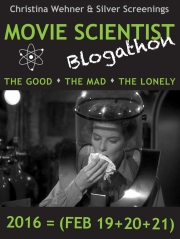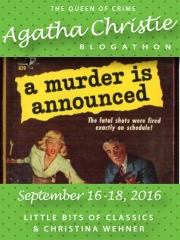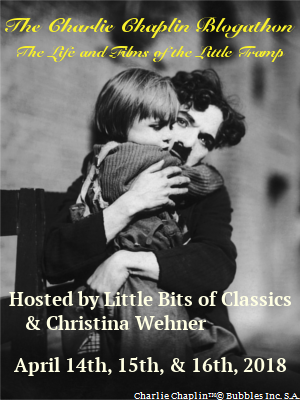 I love The King and I. The music, the songs, the chemistry between Yul Brynner and Deborah Kerr, Oscar Hammerstein’s positive and uplifting view of humanity that is present in all his musicals. It is one of Rodgers and Hammerstein’s best musicals. However, after watching the 1946 Anna and the King of Siam – with Irene Dunne and Rex Harrison and directed by John Cromwell – I do have to admit that in comparison, The King and I is not an especially nuanced story.
I love The King and I. The music, the songs, the chemistry between Yul Brynner and Deborah Kerr, Oscar Hammerstein’s positive and uplifting view of humanity that is present in all his musicals. It is one of Rodgers and Hammerstein’s best musicals. However, after watching the 1946 Anna and the King of Siam – with Irene Dunne and Rex Harrison and directed by John Cromwell – I do have to admit that in comparison, The King and I is not an especially nuanced story.
Anna and the King of Siam is far richer, covering a greater period of time and with more characters given more depth and motivation, though the story is the same and there are actually a lot of scenes and dialogue that were later used in the musical. Fortunately, I only occasionally expected someone to break into song (Irene Dunne could have done it, too). Truly, the movie stands on its own and is especially well-made.
The movie begins, as in The King and I, with Anna Leonowns (Irene Dunne) arriving in Bangkok with her son, Louis (Richard Lyon), to teach the king of Siam’s children and some of his wives. Many of the events follow just as in the later film, too. They are met by the prime minister, called the Kralahome (Lee J. Cobb), Anna rather unceremoniously meets the king (Rex Harrison) and impresses him with her boldness and intelligence, and then she meets the children. There is the same story regarding her desire for a house rather than to live in the palace (specifically in the harem – Anna feels rather bad about bringing her son into a harem). The same clash of wills, the give-and take, the learning of respect and appreciation for each other. The same friendship between her and Lady Thiang (Gale Sondergaard), the king’s first wife and mother of the oldest prince, Chulalongkorn (Mickey Roth). The same incidents regarding the king’s desire to demonstrate to Britain that Siam is not a barbaric country and the same friendship between Anna and the King. One difference is that in the 1946 movie, there is less unspoken romantic tension. It is mostly a friendship, though a very warm one, which consists primarily in discussion.
Rex Harrison’s king of Siam is more of a philosopher. He was evidently persuaded years before by the Kralahome to give up being a monk and be king. He can be almost childlike in his curiosity and desire to do the right thing, but he is insatiably inquiring and always reading. There is actually a very touching friendship between him and the Kralahome (who has a very one-dimensional role in the King and I), who feels responsible for having put him in the difficult and dangerous position of being king. The king is trying to make Siam more Western in the face of growing European influence in Asia, and reveal a crueler side that very nearly drives Anna away for good.
Anna is also far more nuanced. She doesn’t just go charging in with her determined, no-nonsense British satisfaction that she is always right (as Anna does a little bit in The King and I). Anna is often right, but she also makes a number of misjudgments and has several cultural misunderstandings. There is a culture clash when she first arrives and she does not initially understand the king and the difficult position he is in as king. After an argument with him over her house, she is determined to leave and it is the Kralahome who asks her to stay and tries to get her to see things in a different light. Later, she gets so caught up in the king that she does not see that Prince Chulalongkorn is longing for more of her attention and teaching.
I really enjoyed the character of the Kralahome in this film, too. He and Anna interact almost as much as she does with the king and he acts as a kind of go-between for Anna and the king. Intelligent, dignified, diplomatic, he also has a good sense of humor. Gale Sondergaard won an Oscar for her performance as Lady Thiang, the first wife of the king who loves her husband but knows that she no longer has either his love or his ear. Instead, she must now look out for her son, crown prince Chulalongkorn. Linda Darnell is billed third, but she has a fairly small role as Lady Tuptim, who was a gift to the king and is also his current favorite, until she realizes that the king now listens to Anna rather than to her, and runs away to the man she loves.
 Apart from the relationship between Anna and the king, there are two other significant themes in the film. One is the theme of home. When she arrives in Siam, Anna wants a house. When she is considering leaving, the Kralahome suggests that since she has no home or family in England, she should consider making Siam her home, her place to put down roots. Siam becomes not just a place where she works, but the place where she forms her relationships and ties.
Apart from the relationship between Anna and the king, there are two other significant themes in the film. One is the theme of home. When she arrives in Siam, Anna wants a house. When she is considering leaving, the Kralahome suggests that since she has no home or family in England, she should consider making Siam her home, her place to put down roots. Siam becomes not just a place where she works, but the place where she forms her relationships and ties.
The second theme is that of the crown prince, who represents the next generation. It takes a while for Anna to see clearly how much the prince wishes to learn; it takes an explanation from Lady Thiang, who cannot give her son what he needs and it is really only after Anna loses her own son that she sees that the prince has been lost in the shuffle of the palace, which revolves around the king.
Not especially historically accurate, the film is nevertheless excellent. I like Irene Dunne in pretty much everything she does. She could do comedy, drama and musicals, anything. Rex Harrison, Lee J. Cobb, Gale Sondergaard are also excellent. I found it a very touching film and especially enjoyed the relationships between the characters. It doesn’t have the joyous music of Rodgers and Hammerstein, but what it does have it does just as well, and I think is a better story. Though I must warn potential viewers that the film conforms to contemporary practices of the time by casting all white actors to play the Siamese characters. The actors do, however, endeavor to give their characters dignity and make them more than just caricatures.





 Ever since watching Vertigo for the first time several weeks ago (my original review can be found
Ever since watching Vertigo for the first time several weeks ago (my original review can be found 








No Way Out (1950) – Sidney Poitier’s Movie Debut
Dr. Luther Brooks (Sidney Poitier) is an intern working in the prison ward of the county hospital. He’s still a little unsure of himself and though he’s passed the state board examination and has a license to practice, he asks for another year there before going out on his own. He is the first black doctor at this ward and has the complete support of his superior, Dr. Wharton (Stephen McNally), though he occasionally meets a policeman who seems surprised to see a black doctor.
After a failed attempt at robbing a gas station, the two Biddle brothers are brought into the hospital, both shot in the leg. They’re from Beaver Canal, the white slum section of the city. Dr. Brooks notices that though Johnny Biddle was only shot in the leg, he seems to be exhibiting other symptoms, like confusion, lack of sense in his fingers. He suspects a brain tumor and wants to do a spinal tap, but Ray Biddle (Richard Widmark) is furious to have a black doctor tending them. He begs the police not to leave him and his brother alone with Dr. Brooks, uses every racial epitaph in the book and tries to prevent and distract Dr. Brooks from examining his brother.
But while Dr. Brooks is administering the spinal tap, Johnny Biddle dies. Ray is convinced that Dr. Brooks murdered him. Dr. Wharton trusts Dr. Brooks judgement, but Dr. Brooks wants an autopsy done to prove that his diagnosis was right and that there was nothing that could have been done to save Johnny. Ray, of course, refuses. Dr. Wharton and Dr. Brooks go to see Johnny’s ex-wife, Edie Johnson (Linda Darnell) to ask her to ask Ray to allow the autopsy. She is at first extremely surprised to see a black doctor. You can see it in her eyes. It’s almost as if she’s never stood that close to a black person before or held any conversation with them and you can see that it throws her off balance how he talks and acts just like any other person. Her expression is almost what it would be if she were standing face to face with a Martian who turns out to be just like her.
Richard Widmark, Linda Darnell, Sidney Poitier
But when Edie does go to see Ray, he pulls out all the stops. He appeals to the fact that she grew up next door to Johnny and Ray (their parents used to get drunk together), old loyalties to Beaver Canal, an ‘us vs. them’ mentality regarding both blacks and whites, policemen and establishment people like doctors. He then piteously pleads that he saw Dr. Brooks kill Johnny and that people are trying to cover it up. Edie is swayed, reverts to old habits of thought, and agrees to tell Ray’s other brother, George (Harry Bellaver), and the other members of Beaver Canal what Ray told her. The whole incident, they know, will start a riot.
But the black community near Beaver Canal hears about the impending attack on their neighborhood and decide to preemptively attack Beaver Canal, despite Dr. Brooks pleas not to. He feels that such attacks never do any good and only inflame hatred. But the riot still occurs, with Beaver Canal getting the worst of it.
Edie is disgusted with herself and with the violent, almost animal (her word) hatred and brutality displayed by the members of Beaver Canal. Meanwhile Dr. Brooks feels the entire riot occurred because of him and confesses to the murder of Johnny to force an autopsy of Johnny that will prove him right. When they find the tumor that proves his diagnosis, Ray escapes and sets out to murder Dr. Brooks.
No Way Out was Sidney Poitier’s film debut. He was only twenty-two years old, though he said he was twenty-seven, but he is already a powerful actor. Dr. Brooks is portrayed as a good, though flawed, human being and not just a cardboard cutout saint. He’s had to deal with hatred all his life and has grown used to it, but there’s something about the intensity and single-minded focus of Ray that shakes him up. He wants to prove himself in the eyes of others and can’t just let it go, despite Dr. Wharton’s assertion that there is no need, and he has a slight crisis of confidence. His reactions are complicated: determination, nobility, anger, frustration, patience, impatience. He wants to deal rationally with the situation, but keeps encountering the irrationality of Ray.
Edie seems to bring out more of the noir elements of the film in her struggles to extricate herself from Beaver Canal and is played very convincingly by Linda Darnell. It is fascinating to watch her character change and see her ideas transformed. She begins by referring to Dr. Brooks as “that colored doctor” or “negro doctor.” By the middle of the film, you can see her consciously stopping and choosing to say “Dr. Brooks.” She goes out of her way to acknowledge Dr. Brooks’ wife by greeting her. By the end, she calls him Luther, and not in a condescending context. Every time she meets a black person, you can see her curiosity and as she talks to Dr. Wharton’s black housekeeper, Gladys, she begins to come to that realization that Gladys is not “other,” but that they actually have much in common.
No Way Out is a film that reflects its time. Dr. Wharton is a good example of this. He says he believes in good doctors, not white doctors or black doctors, and he is a good friend to Dr. Brooks. However, you can still see the racial bias of the system at work, through no fault of his own. He is in the position of patron, not just friend. And when Mrs. Brooks holds back her tears until after he has left and cries on Gladys’ shoulders, you can see that there is still lurking an ‘us vs. them’ mindset. You don’t cry in front of the patron.
In real life, Richard Widmark and Sidney Poitier were good friends. In fact, Widmark felt so bad about how he treated Poitier’s character in the film, that he frequently apologized during filming. It’s a well-acted, intense, and compelling drama, that holds up well as a movie and not just as social commentary.
Share this:
Posted by christinawehner on April 27, 2015 in Drama, Film Noir
Tags: classic movies, Joseph Mankiewicz, Linda Darnell, Movie Review, Prison Ward, Prison Wards, Race Riots, Racism, Richard Widmark, Sidney Poitier, Social Commentary, Stephen McNally